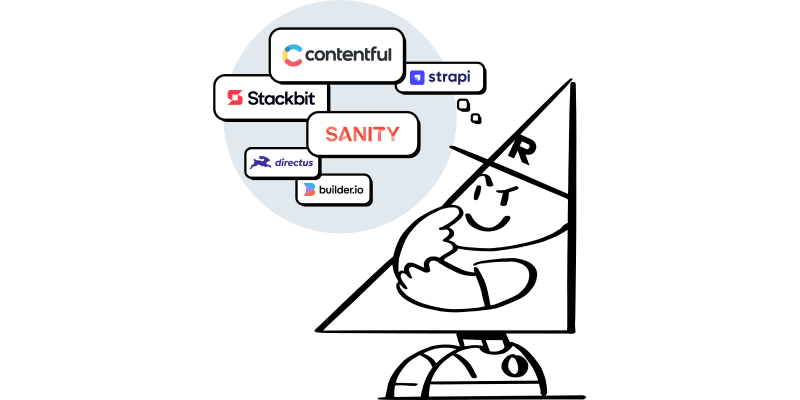As the frontend experience becomes the true differentiator for brands, there is a growing demand for tools that prioritize frontend-first development, and enable frontend developers to focus on delivering an exceptional user experience. Vercel is that solution.
When it comes to incorporating a frontend cloud solution like Vercel within your corporate IT strategy, the approach will differ depending on whether you’re dealing with a marketing website or an application.
Frontend Cloud for marketing websites
Tech leaders overseeing MarTech often have more latitude and are able to decouple themselves from the broader corporate IT strategy. The regulatory burdens on static sites are usually much lower as well, so these teams typically don’t need to incur the overhead built-in into their enterprise cloud strategies.
If you are an executive sponsor for projects like this, it’s important to know that Vercel is SOC2 Type 2 compliant and be prepared with the right technical talking points very early on in the planning process. These might include:
- Speed (and cost) of getting going:
IT teams are often stressed for resources, so creating new environments (one of which must be production-ready) in their clouds can take weeks, if not months. Creating new environments with Vercel only takes one day, and you can start seeing live implemented designs in one week. That’s a powerful and often unprecedented advantage. - Preview environments:
This is linked to the previous point but is worth emphasizing. Enterprises are often using a legacy DXP (such as AEM, OpenText, etc.) where hosting and previews are built-in. Authoring and marketing teams are completely dependent on these for their workflows. When you move to a modern, headless CMS, recreating that hosting and preview functionality from scratch in your chosen cloud environment is a massive investment. In-house teams often lack the requisite skills to create and build these pipelines and integrate them into the headless CMS of choice. - Performance / Web Vitals scores:
Every year, site performance becomes a more important part of SEO, to say nothing of the demonstrated impact of site speed on conversion rates. These factors are compounded by the fact that paid acquisition is getting more expensive (from App Tracking Transparency to the gradual death of third-party cookies). To get a trusted understanding of how they’re doing in the performance department, marketing executives look at Google's Web Vitals scores, and most find that they’re not doing too well. With these challenges, the native combination of Next.js and Vercel is compelling. With the Next/Vercel native combination, you have “out-of-the-box” optimizations (React Server Components, ISR, next/image, next/font, next/script, edge functions, global CDN, etc...) that are critical to having a high Google Core Web Vital score. While it’s possible to recreate some of these features in the cloud, that capability is often beyond those of many in-house IT teams, even if they had the capacity.
Frontend Cloud for web applications
For applications, it is slightly more difficult to break away from established cloud and IT strategies due to:
- Complex coordination of computing services and data services (some of which are on-premises)
- Regulated industries that require strong security and governance practices. Staying in the walled garden of the cloud offers them that ability since the computing and data services they offer are well-integrated with governance tools
- IT leaders want to have access to people that are easy and cheap to find with the requisite expertise and skillsets. The public cloud providers have virtual armies of people in the market with certifications and experience in their built-in services
If you are thinking about using Vercel for an application, here are some things to consider:
- Decoupling your frontend from the rest of your systems is essential to driving the speed of learning, experimentation, and successful innovation
- Thinking serverless allows you to gain velocity provided by a “backend for frontend” approach
- A team with the requisite experience like Rangle can help you build a joint team that will not only help you upskill your team and also retain frontend staff who crave a modern way of working but are often left dealing with cloud and back-end complexity they dislike
Check out our case study on how we helped one of Canada's leading D2C retail brands build a new headless and serverless site with Vercel.










